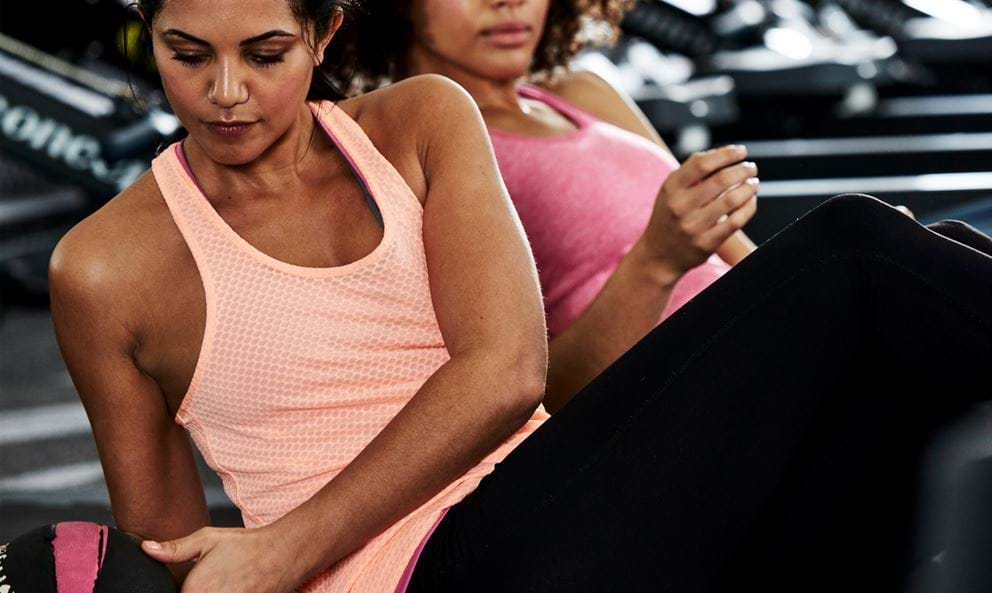How to train your core for optimal results

Written by

If you're looking for the how's and why's of core training to get the best real-life results, you've come to the right place. Let's begin with a quick guide to the 4 distinct parts that make up the core.
What is the core?
The Rectus Abdominals (abs)
Often referred to as a 'six pack' - which is why this is the only muscle group people tend to concentrate on - this muscle plays a vital role in allowing you to bend forwards, breathe forcefully and to keep your internal organs in place.
The Internal Obliques
These essential muscles help the torso flex and rotate to each side. They also work alongside the diaphragm to help you breathe out forcefully.
The External Obliques
As well as flexing and rotating the torso, these large muscles also flex the torso from the sides. They are the strongest of the abdominal muscles.
The Transverse Abdominis
Often referred to as the deep abdominal muscle, the transverse abdominis protects the internal organs and helps increase our abdominal pressure which allows us to lift more weight.
The benefits of a strong core

Now that we've covered the basics, let’s discuss why having a strong core is so beneficial.
Good posture
A lot of the people I meet on a daily basis suffer from a common postural problem known as anterior tilted pelvis, which is when the pelvis is rotated forward. Whilst there are many different muscle groups you can improve on to improve your posture, the main cause of this is a weak core (specially the rectus abdominis), so it’s important to include core strengthening exercises into your routine to look after your posture. Having good posture is particularly important for long term health and wellbeing and will allow you to keep many soft tissue injuries at bay.
Alleviate any back pain
Do you often experience back pain? Having a weak core is usually the cause of most back pains. If you have a weak core, this means that your other muscle groups may have to work harder to keep your trunk stable, which can lead to an increased risk of injury from muscle strains. To avoid using other muscle groups to overcompensate, building a strong core can help in alleviating back pains.
Improve athletic/sports performance
In order to perform at your 100% and generate the maximum amount of force with the upper or lower body, both the spine and pelvis must be stable. This is best achieved when the core and glutes work together harmoniously. A strong and stable core allows athletes to perform twisting movements powerfully and safely. Even if you don’t consider yourself as an athlete, working on your core is important in improving your workout performance, and in turn, optimise your results, so it’s best not to neglect core training.
Common core training mistakes I see
Mindlessly training
For me, the most important mistake that people make is that they lose - or do not even develop - the mind-muscle connection. This refers to the ability of a person to really feel the target muscles contract exactly when and how they want them to. Being more in touch with our bodies provides quicker and longer-lasting results. So next time you’re doing a core exercise, really think about contracting those ab muscles!
Neglecting core training altogether
Secondly, and probably the most pitiful mistake is neglecting core training. Many people are mistakenly led to believe that only training with compound movements (exercises that involve more than one muscle group like squats and deadlifts), or even a loaded variation, is enough to train the core well. However, a very strong core is essential to maximising results and minimising the risk of injury while performing compound movements. Therefore, further and more specific training of the core is just as important!
Focusing on sit-ups
While sit-ups are probably the most renowned of ab exercises, research has shown that other core exercises can be more effective in strengthening the core, whilst also creating stability for the hips and lower spine. Instead of sticking to just sit-ups, try incorporating different ab exercises into your routine. Below, you’ll find a few of my favourite ab exercises you can try in the gym.
How to train the core effectively

Here are the three main core training categories that I use when it comes to my training and training my clients:
Category 1: Anti spinal extension - my favourite exercises include hollow holds, banded dead bugs, RKC planks and ab-wheel rollouts.
Category 2: Anti spinal lateral flexion - exercises include variations of the farmers carry, suitcase deadlifts and single arm offset loaded split squats.
Category 3: Anti spinal rotation - some of my favourites include standing/kneeling Pallof presses, anti-rotational hollow holds and landmine barbell rotations.
I would typically recommend performing at least one of these exercises from each category every week for a stronger, flatter core.
So, there you have it! You now know the anatomy of the core, why you should train your core, and how to train your abs more effectively for optimal results so you can apply this into your training.
If you have any questions, please get in touch at @lewisgaffneyifitness.
To see any of the exercises listed above, check out my Instagram for video demonstrations.
About the author: Lewis Gaffney is a personal trainer at PureGym Birmingham City Centre. His mission is to provide people with the best training methods possible for their goal and teach methods for long-term health and fitness. His background in sport and injury rehabilitation has given him a brilliant understanding of how the body moves, and how it reacts to different stresses. Follow Lewis on Instagram for more free training and nutrition tips: @lewisgaffneyfitness


